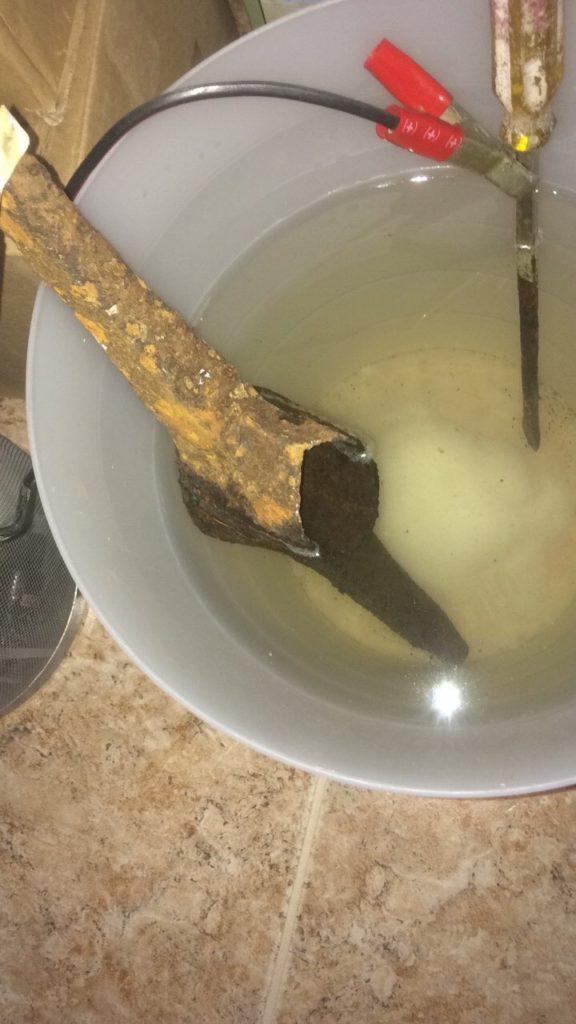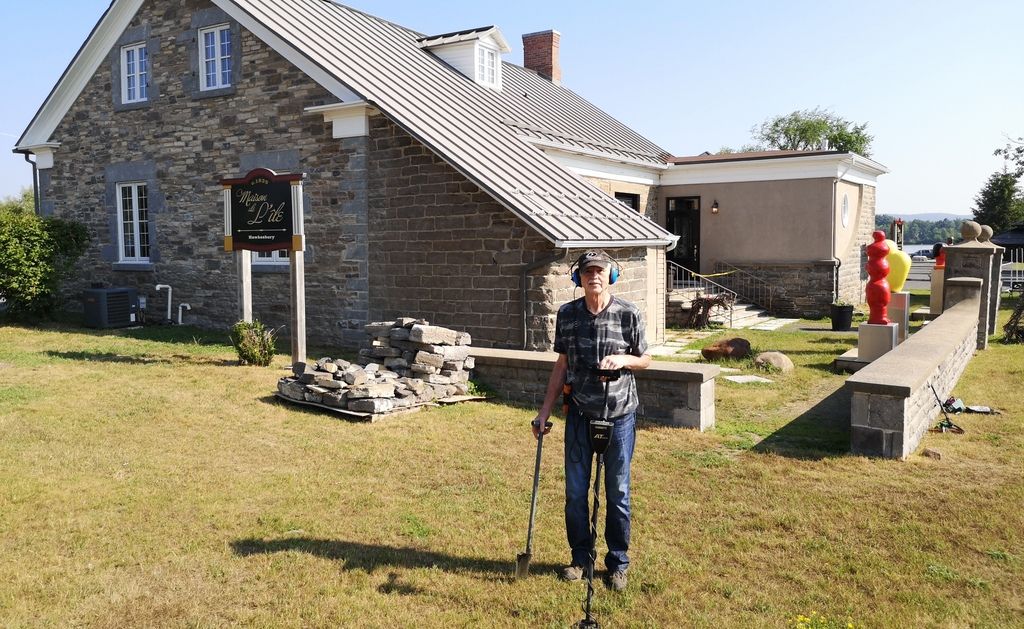Gregory Barr always wanted to own a metal detector and after finally purchasing one two years ago, he is now hooked on looking for historic artifacts.
The Hawkesbury resident recently donated a treasure-trove of historical items he has found to Le Chenail Cultural Centre, which will soon be putting the artifacts on public display. The items include a 200-year-old pick-axe head, nails and spikes, portions of clay pipes (smoking), and the remains of the heel of a military boot – just a few of the many things Barr has found since he acquired his metal detector and started roaming parks and public spaces in the region. But to come up with the good pieces requires a lot of hard work and picking through numerous objects with zero value historically or monetarily.
“They say 95 per cent of what you find is garbage. It could be pop cans, pieces of metal, pie plates, bottle tops, pull tabs – all kinds of things,” observes Barr, whose semi-retirement status gives him plenty of time to explore the area. “In order to find stuff, you need to dig for every signal (from the detector).”
The largest item in the donated collection is the pick-axe head, which Barr found during an expedition behind St. Matthew’s Anglican Church in Grenville. The item was located between the Grenville Canal and a stone wall at the rear of the historic church.
“I would put that pick-axe back to the early to mid 1800s when they were building the canal,” the amateur archaeologist explains. “I also found what looked like a small horseshoe, but it would go on a soldier’s boot – it’s what they call a heel plate.”
As with all of the artifacts Barr finds, the pick-axe head and heel plate were cleaned and restored as much as possible through an electrolysis process, which is used to remove all of the excess rust. After that, the items are sealed in wax and heated up an oven, which allows the wax to flow into the pores of the metal and preserve the piece.
Other unusual items donated to Le Chenail are two portions of an old clay pipe with writing on them. Through research, Barr was able to match up the pieces and portions of writing with clay pipes made by The William Henderson Pipemaking Co., which was in business in Montreal from 1851-1867.
“I assumed it was saying ‘Henderson’ from the first part of the name and then the last part of Montreal,” Barr recalls. “So I went online and was able to find similar pipes.”
So how does one find a clay pipe with a metal detector?
“It was by accident,” Barr laughs. “I was after a piece of iron that was in that location and as I was digging to get the iron, I thought ‘what is that, a bone?’. Then I looked at it and there were words on there.”
One of Barr’s favorite pieces was found on the old Higginson property near the junction of Pattee Road and Highway 34, just south of Hawkesbury. The item looks like a coin, but is in fact an 1813 half-pence token minted in Nova Scotia and intended to be used there.
“It was for trade and travel only – for some reason it got here,” says Barr, who gave that particular artifact to his son. “They didn’t have any currency then in Canada so they gave out these tokens to allow people to travel.”
After his donation to the cultural centre, Barr was invited by staff to take his metal detector into the crawl space of the building to see what he could find. The historic stone structure was constructed in 1832 and for many years served as the administrative bureau and general store for the Hawkesbury Mills. Alas – a search of the area – which has been modernized with electricity wires and plumbing over the years – yielded only some square nails, a rusted metal bracket and pieces of pottery and glass, which will be added to Barr’s display in the centre.
Staff at le Chenail were very excited to receive the artifacts donated by Barr and they are expected to go on display within the next week when a suitable display case arrives, said Lynda Clouette-Mackay, the centre’s General and Artistic Director.
“We want to make sure that people can see it, but with a locked case, because there are a lot of small pieces and really interesting items that will be on display full-time,” said Clouette-Mackay, who noted Barr has provided the le Chenail with items and information in the past. “I call him our archaeologist-in-residence at the cultural centre.”

Barr uses an electrolysis process to clean and restore the items he finds, including this pick-axe head from the early 1800s.

This is the restored pick-axe head, which Barr believes may have been used in the building of the Grenville Canal.

A portion of a clay pipe manufactured by The William Henderson Pipemaking Co. of Montreal in the mid-1800s.

One of Barr’s favorite artifacts that he has found is an 1813 half-pence token (left) minted in Nova Scotia and intended for travel use.


